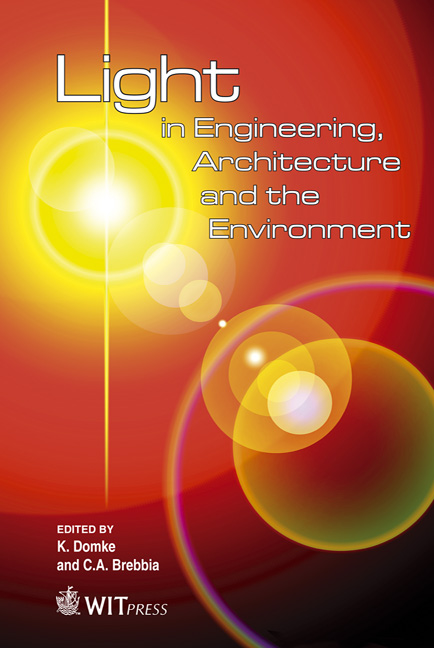The Dynamic Lighting Technique In Indoor Architecture
Price
Free (open access)
Transaction
Volume
121
Pages
10
Page Range
3 - 12
Published
2011
Size
1,492 kb
Paper DOI
10.2495/LIGHT110011
Copyright
WIT Press
Author(s)
F. Patania, A. Gagliano, F. Nocera, A. Galesi & J. Caserta
Abstract
Light has a significant effect on the whole biological parameters of people. Its influences are found in many areas including the following: - By means of human sight, light organizes the relationship between men and both living and lifeless of all creation in its entirety. - The releasing into the human body of hormonal substances such as melatonin and cortisol are influenced by the light that, consequently, influences the well- being status of people such as body temperature, alertness and so on. - The alternating of daytime and night time, that is the alternating of light and darkness, sets significantly the so called \“biological clock” of man. According to that previously reported, light has a direct and significant impact on the behavior of people. So, while the emphasis in the past may have been primarily focused on the visual effects of lighting, the present efforts of research are focused on discovering the biological effects. \“Dynamic lighting” is an advanced technique that tries to bring the dynamic of daylight in indoor environments with the aim of creating a stimulating \“natural” light that may enhances people’s sense of well-being. According to this objective, the Authors have applied, using specialist software, the dynamic light technique to a model of minimalistic architecture used as offices, museums and exhibition halls. By the previous technique, people could control their own space according to their needs, mood and task, creating the right atmosphere by \“dynamic light” to improve performance and motivation of their own job.
Keywords
dynamic light, well-being, comfort, minimalist architecture





